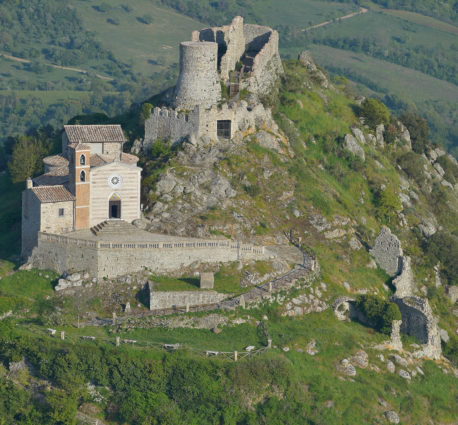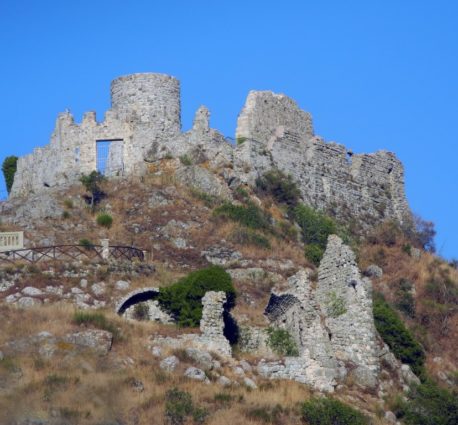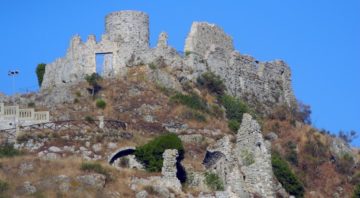{:it}
Sulla sommità di uno spettacolare colle trachitico spiccano i resti del Castello o Rocca di Tolfa, detta anche Rocca Frangipane.
Il Castello è una tipica rocca medioevale risalente agli inizi del IX secolo d.C., ristrutturato nel 1448 insieme alle mura del borgo, dai fratelli Pietro e Ludovico.
Restano visibili ancora in buono stato di conservazione le mura perimetrali e il maschio con una forma conico-piramidale.
Adiacente al Castello e con una vista panoramica del Paese, si trova la Chiesa del santuario della Rocca, di origine medievale e chiamata anticamente Sacta Maria de Arce.
Dopo un lungo periodo di abbandono e decadimento, nel 1567, la chiesa fu restaurata a spese della comunità su richiesta della confraternita del Nome di Dio, legata all’ordine dei Domenicani.
All’interno della chiesetta, dal 1695 circa, fu collocata l’immagine della Vergine della Pietà seduta tra i santi Bartolomeo ed Emidio che stringe tra le sue braccia il corpo di Cristo deposto dalla Croce. Oggi l’immagine votiva è collocata sopra l’altare maggiore del XIX sec. realizzato in marmi policromi.
Ancora oggi nel Santuario dedicato alla Vergine Maria si celebrano le feste in onore della Madonna Addolorata e di San Michele Arcangelo.

The remains of the Castle, also known as Rocca di Tolfa or Rocca Frangipane, stand on the top of a spectacular trachytic hill.
The Castle is a typical medieval fortress dating back to the early 9th century A.D., that was renovated in 1448 when it became the property of the Frangipane family during the conquest of Viterbo.
The surrounding walls and the conical-pyramidal shaped fortified tower are still visible and in a good state.
The Church of the Sanctuary of Madonna della Rocca has medieval origin. Formerly called Sancta Maria de Arce, it is next to the Castle, and offers a beautiful country view.
After a long period of abandonment and decay, in 1567, this church was restored at the expense of the community at the request of the Brotherhood of the Name of God, which is related to the Dominican Order. This small church has been home to the image of Santa Maria della Pietà since 1695. Initially, it had been placed between Saints Bartholomew and Emidio, holding the body of Christ deposed from the Cross in her arms. Now, you will see this votive image above the 19th-century high altar made from polychrome marbles.
Feasts in honour of Our Lady of Sorrows and St Michael the Archangel are still celebrated in this Sanctuary dedicated to the Virgin Mary.

{:}




